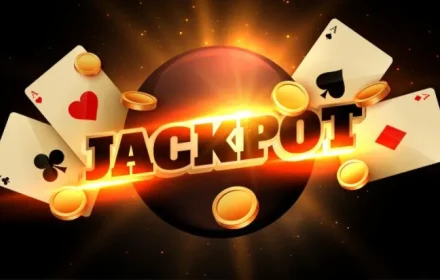Proven fairness in gambling has long evolved from being a “technological bonus” to a necessary standard. The principle, built not on loud statements but on strict mathematics and cryptography, allows turning abstract “trust” into a concrete technical mechanism.
Unlike classic offline casinos where outcome verification is impossible, digital platforms use open algorithms where every spin, roll, or card can be recalculated and verified.

What Is Provably Fair Gambling
The term “provably fair gambling” reflects the player’s ability to personally verify the correctness of any outcome without resorting to support, lawyers, or fortune-tellers. The transparent system uses a predictably-unpredictable combination of client and server seeds with subsequent hashing — this creates an algorithm where the outcome cannot be tampered with but can be verified.
Example: before the round starts, the server sends a hashed result — let’s say, SHA-256 of the seed combination. After the round ends, the system reveals the original seed, and any user can compare the obtained hash with the original one to ensure that the result has not changed.
How Provably Fairness Works
The fairness mechanism of the game relies on mathematically precise procedures that exclude the influence of human factors. The system verifies each outcome through rules embedded in the code, maintaining the integrity and transparency of the process.
The working principle is based on three blocks:
- Hash — a digital fingerprint of the result that cannot be decrypted in advance but can be easily verified later.
- PRNG — a random number generator that creates the initial randomness, which is transformed through cryptographic functions.
- Client seed — a variable from the player’s side adding interactive unpredictability.
Cryptographic technology in casinos works similarly to blockchain: to record but not alter. The algorithm code, verifiable in the interface, eliminates the possibility of retroactive adjustments. This is a key argument for why provably fair gambling is more important than any visual design or advertising.
Provably Fair in Casinos: Who Is Already Using It
Blockchain-based platforms are leaders in implementation. Stake, BC.Game, Roobet, TrustDice apply smart contracts that automate bet calculations and confirm the transparency of each outcome without human involvement.
Example from Roobet: each spin in slots has a public seed. After the round ends, the player receives the server seed and recalculates the outcome in the “online casino fairness check” section.
This is a standard: without it, a platform loses the community’s trust and misses out on international licenses.
Provably Fair Gambling: Security Over Commerce
An open algorithm does not reduce the level of security but enhances it. Seed encryption, external auditing, verification of each line of code, and cryptographic certificates form a strong protection.
Casino fairness guarantees for players are no longer limited to licenses. Today, it’s an open interface, technical documentation, manual verification capability, and access to logs of all draws.
Trust Checklist: How to Identify a Fair Platform
Anyone planning to engage in online gambling can check for the presence of the system on the platform. Here is an extended algorithm for analysis:
- Presence of a Provably Fair section — a mandatory sign.
- Open-source outcome generation code — the cryptographic formula should be published.
- Verification capability through third-party services — for example, through GitHub or independent online audits.
- Hash before the game and seed disclosure after — a strict mandatory element.
- External verification — laboratory, certificate, independent audit.
- Data encryption — at least SHA-256.
- Availability of outcome history — including previous hashes and results.
Such a system eliminates any doubts, makes manipulations impossible, and makes disputed situations transparent and solvable.
Fairness as Business Capital
Companies ignoring these technologies lose their competitive advantage. According to the Curacao eGaming report, platforms with Provably Fair receive 32% more return visits.
Blockchain casinos with open-source code and support for transparent gaming algorithms see a 47% increase in registrations compared to closed competitors.
Example: in 2023, the TrustDice platform with an open mechanism and integrated cryptography increased the average session duration to 38 minutes, compared to the market’s 21 minutes.
Code, Interface, and Audit: Technical Transparency Triangle
Technological transparency starts not with promises but with architecture, where each link is subject to verification. Only the combination of code, accessible interface, and independent audit forms a system that eliminates manipulations.
Verified fairness of gaming results requires a clear architecture:
- Algorithm code must be published and described, including input parameters.
- Verification interface must allow manual verification without registration or deposit.
- Audit by an independent laboratory confirms the correctness of the claimed algorithm.
Support for these three components ensures trust in the platform and reduces fraud risks to a technical minimum. Online casinos that have integrated this system reduce support inquiries regarding the question “Is the win real?” by 70% according to internal compliance data.
Provably Fair Gambling: Not a Guarantee of Winning
Verified transparency of gaming processes does not affect the outcome itself but eliminates falsifications. The system does not change the odds but guarantees that the outcome is created fairly, without interference or manipulations. Randomness is not just chance but a calculation based on cryptographic rules.
For example, a smart contract on a platform with open-source code records the bet, stores it in the blockchain, and outputs the result after the algorithm triggers. Neither the administrator, developer, nor provider can influence the outcome — the mechanics are embedded at the protocol level.
This approach transforms gambling into a system with verifiable conditions and eliminates any doubts about trust in the results.
 en
en  de
de  ar
ar  es
es  hi
hi  fr
fr  nl
nl  ru
ru  it
it  pt
pt  el
el 




